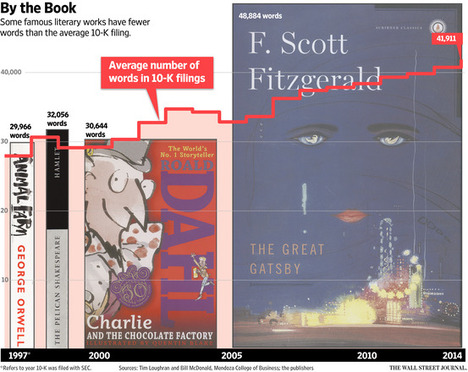John Tierney penned another eye-opening commentary, this one as a cover-story for the SundayReview Section of The New York Times. A few of the best passages are quoted below.
(p. 1) In 1996, I wrote a long article for The New York Times Magazine arguing that the recycling process as we carried it out was wasteful.
. . .
So, what’s happened since then? While it’s true that the recycling message has reached more people than ever, when it comes to the bottom line, both economically and environmentally, not much has changed at all.
Despite decades of exhortations and man-(p. 4)dates, it’s still typically more expensive for municipalities to recycle household waste than to send it to a landfill. Prices for recyclable materials have plummeted because of lower oil prices and reduced demand for them overseas. The slump has forced some recycling companies to shut plants and cancel plans for new technologies.
. . .
One of the original goals of the recycling movement was to avert a supposed crisis because there was no room left in the nation’s landfills. But that media-inspired fear was never realistic in a country with so much open space. In reporting the 1996 article I found that all the trash generated by Americans for the next 1,000 years would fit on one-tenth of 1 percent of the land available for grazing. And that tiny amount of land wouldn’t be lost forever, because landfills are typically covered with grass and converted to parkland, like the Freshkills Park being created on Staten Island.
. . .
Last week the National Institutes of Health announced that it had prematurely ended a large national study of how best to treat people with high blood pressure because of its exceptional results.
In this trial of more than 9,000 people age 50 and older with high blood pressure, an aggressive treatment strategy to keep systolic blood pressure below 120 was compared with a conventional one aimed at keeping it below 140. The subjects all had a high risk of heart attacks, stroke and heart failure. The N.I.H. concluded, six years into a planned eight-year study, that for these patients, pushing blood pressure down far below currently recommended levels was very beneficial.
. . .
As a business, recycling is on the wrong side of two long-term global economic trends. For centuries, the real cost of labor has been increasing while the real cost of raw materials has been declining. That’s why we can afford to buy so much more stuff than our ancestors could. As a labor-intensive activity, recycling is an increasingly expensive way to produce materials that are less and less valuable.
Recyclers have tried to improve the economics by automating the sorting process, but they’ve been frustrated by politicians eager to increase recycling rates by adding new materials of little value. The more types of trash that are recycled, the more difficult it becomes to sort the valuable from the worthless.
In New York City, the net cost of recycling a ton of trash is now $300 more than it would cost to bury the trash instead. That adds up to millions of extra dollars per year — about half the budget of the parks department — that New Yorkers are spending for the privilege of recycling. That money could buy far more valuable benefits, including more significant reductions in greenhouse emissions.
So what is a socially conscious, sensible person to do?
It would be much simpler and more effective to impose the equivalent of a carbon tax on garbage, as Thomas C. Kinnaman has proposed after conducting what is probably the most thorough comparison of the social costs of recycling, landfilling and incineration. Dr. Kinnaman, an economist at Bucknell University, considered everything from environmental damage to the pleasure that some people take in recycling (the “warm glow” that makes them willing to pay extra to do it).
He concludes that the social good would be optimized by subsidizing the recycling of some metals, and by imposing a $15 tax on each ton of trash that goes to the landfill. That tax would offset the environmental costs, chiefly the greenhouse impact, and allow each municipality to make a guilt-free choice based on local economics and its citizens’ wishes. The result, Dr. Kinnaman predicts, would be a lot less recycling than there is today.
Then why do so many public officials keep vowing to do more of it? Special-interest politics is one reason — pressure from green groups — but it’s also because recycling intuitively appeals to many voters: It makes people feel virtuous, especially affluent people who feel guilty about their enormous environmental footprint. It is less an ethical activity than a religious ritual, like the ones performed by Catholics to obtain indulgences for their sins.
Religious rituals don’t need any practical justification for the believers who perform them voluntarily. But many recyclers want more than just the freedom to practice their religion. They want to make these rituals mandatory for everyone else, too, with stiff fines for sinners who don’t sort properly. Seattle has become so aggressive that the city is being sued by residents who maintain that the inspectors rooting through their trash are violating their constitutional right to privacy.
For the full commentary, see:
JOHN TIERNEY. “The Reign of Recycling.” The New York Times, SundayReview Section (Sun., OCT. 4, 2015): 1 & 4.
(Note: ellipses added.)
(Note: the online version of the commentary has the date OCT. 3, 2015.)
The Kinnaman paper mentioned above, is:
Kinnaman, Thomas C., Takayoshi Shinkuma, and Masashi Yamamoto. “The Socially Optimal Recycling Rate: Evidence from Japan.” Journal of Environmental Economics & Management 68, no. 1 (July 2014): 54-70.


